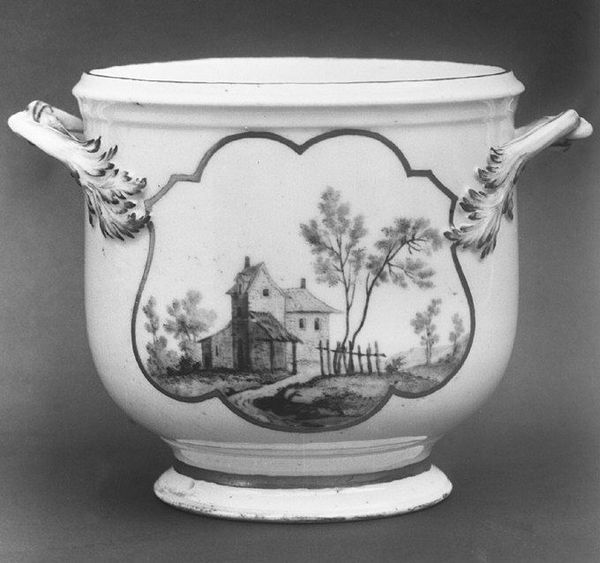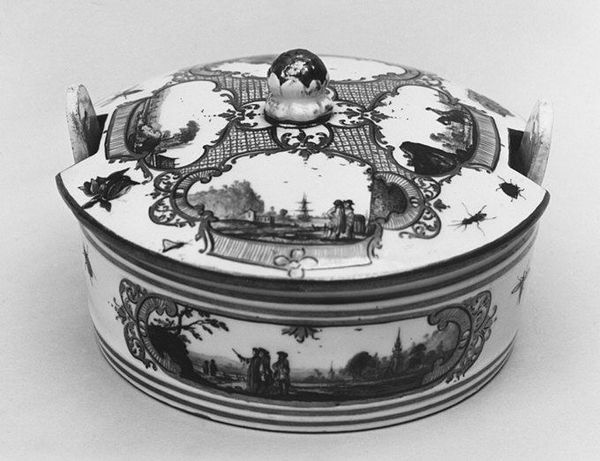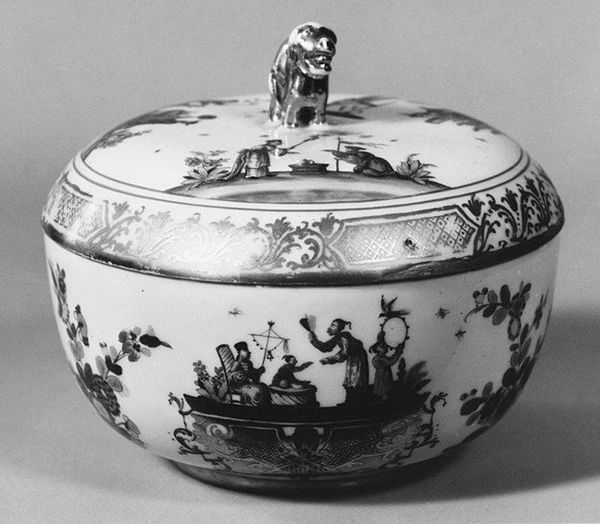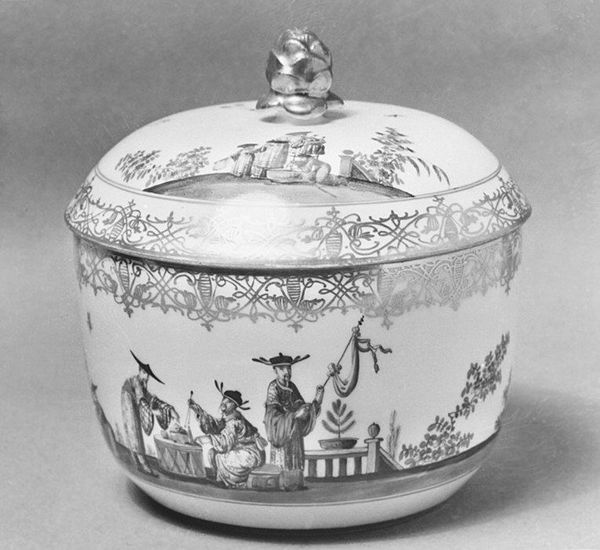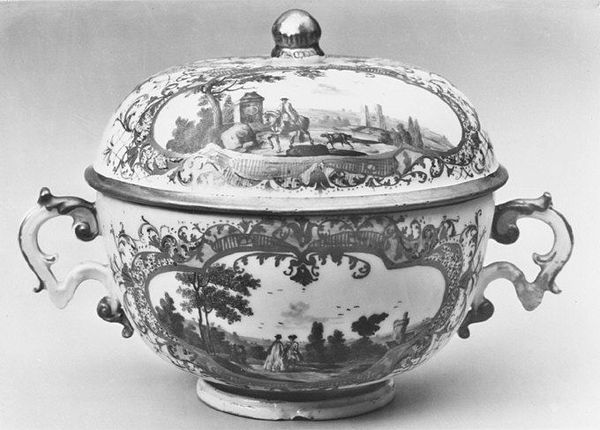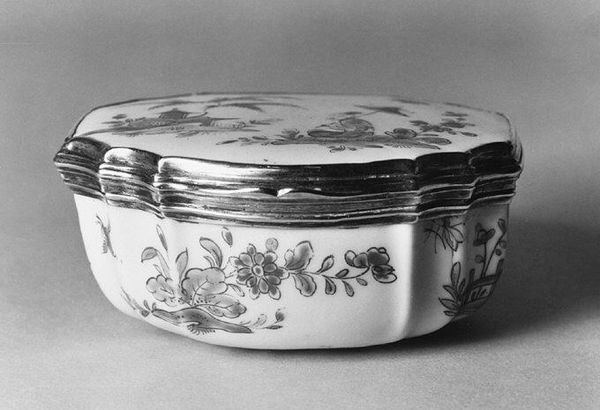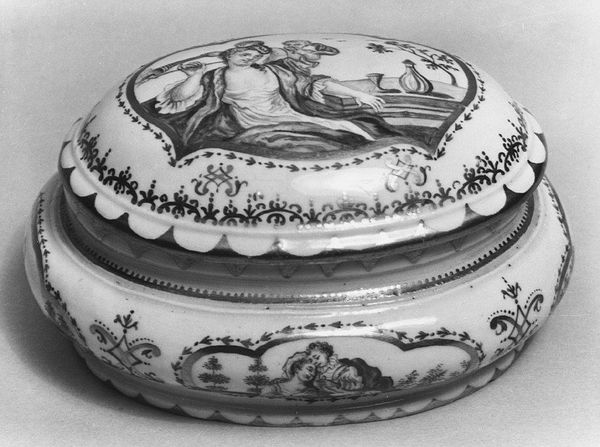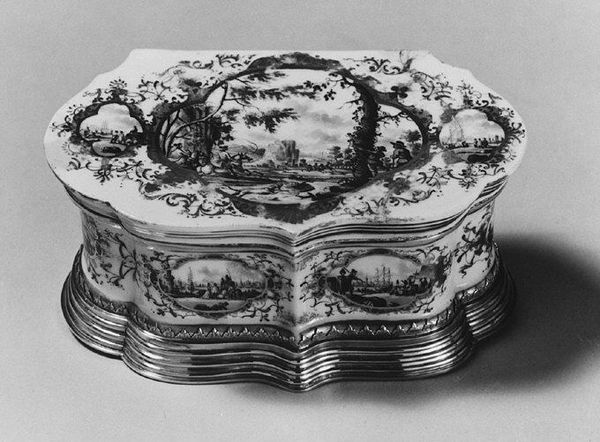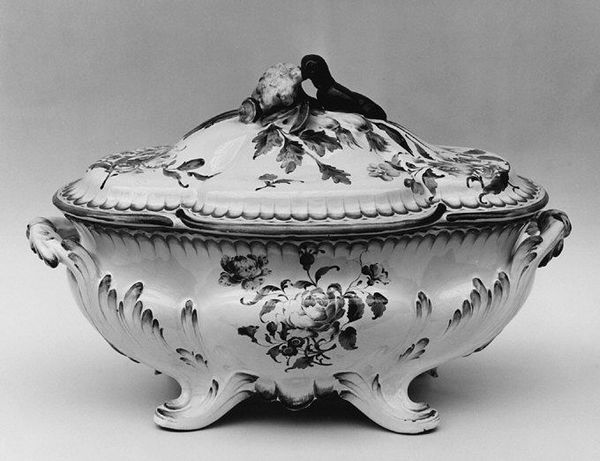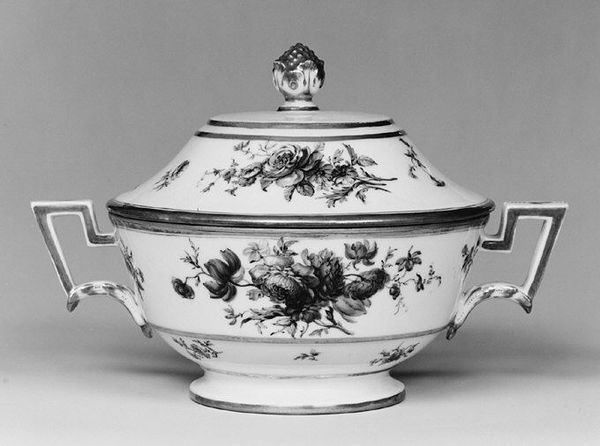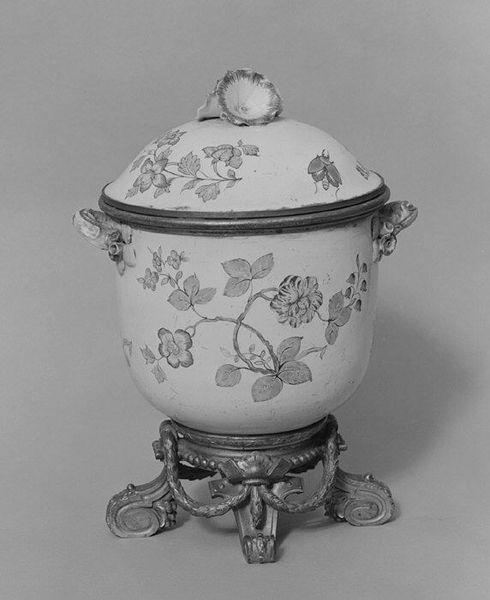
painting, ceramic, porcelain
#
painting
#
landscape
#
ceramic
#
porcelain
#
genre-painting
#
monochrome
#
decorative-art
#
miniature
#
monochrome
Dimensions: 5 1/8 × 6 7/8 in. (13 × 17.5 cm)
Copyright: Public Domain
Curator: Here we have a bouillon bowl with cover, created by the Höchst Manufactory between 1760 and 1770. It is a piece of porcelain currently residing at the Metropolitan Museum of Art. Editor: My first impression is of understated elegance, even a sort of hushed sophistication, achieved primarily through its monochrome palette. The landscapes evoke a feeling of tranquility and order, yet rendered in such miniature—the piece is rather fetching! Curator: The subdued tones certainly contribute to that mood. If we observe closely, the monochrome scenes aren't merely decorative but illustrate specific architectural elements and landscape motifs typical of the period. These depictions may reflect the contemporary fascination with idealized pastoral settings and the integration of country life within the aristocracy's purview. Editor: It strikes me how effectively the minimalist palette accentuates the bowl's shape and the delicacy of the porcelain itself. It forces a focus on the object’s physical form and how light plays across the rounded surfaces, generating complex relations between the image and vessel, almost dissolving the two into each other. Curator: Indeed. The application of such fine detail onto functional tableware, as evidenced here, suggests the role of dining and its associated rituals in signifying status during this era. To own such pieces was undoubtedly to project power. Moreover, we mustn't overlook the economic structures of production, and how a proto-industrial process catered to a culture of elite consumption. Editor: Right, it highlights the intersection of art and utility in courtly life. It's interesting how these miniature scenes transport the diner—even if fleetingly—into a realm beyond their immediate environment, a miniature pastoral drama acted on a table’s surface. But also I want to point out the technical perfection; it can only exist thanks to precise techniques with materials that could easily shatter in the manufacturing process. The clean shapes and precise lines… Curator: A precarious balance, yes, indeed. The appeal of the monochromatic scheme perhaps lay in its understated luxury. A counterpoint to the polychromatic extravagance which dominated earlier forms of aristocratic taste. It is intriguing how it speaks about changing norms through the application of painting onto everyday items. Editor: So, ultimately it's the subtle synthesis of design and the depicted landscapes—an intimate reflection of 18th-century ideals expressed through this simple bowl. It’s less a utilitarian object and more a portable painting, easily placed upon the most lavish table settings. Curator: Precisely. The bouillon bowl encapsulates both the functional purpose of serving and the representational role of conveying social narratives, giving it lasting cultural meaning to this day.
Comments
No comments
Be the first to comment and join the conversation on the ultimate creative platform.
